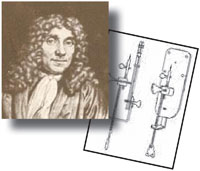Dr. John Spence was a man who lived his life beyond the boundaries. Dr. Spence's scientific exploration extended further than most and was truly cross-disciplinary. His own training and career spanned three continents. In his personal life he loved flying, sailing, traveling, and music—hobbies that literally cross boundaries.
Spence was born on April 21, 1946, in Canberra, Australia to Vernon and Louis Spence. Tragically his father, a decorated RAAF fighter pilot, was killed in action during the Korean War when Spence was only 4 years old.
His love of life and music nearly derailed his academic pursuits when he failed his first year at Melbourne University (MU). After repeating the year at the University of Queensland, Spence was re-admitted to MU where he graduated with first-class honors. For our non-British readers, that is the highest honors degree one can receive. Spence stayed at MU to pursue a PhD under the supervision of Dr. Alan Spargo. Upon completion in 1972, he moved to Oxford to conduct postdoctoral research under Sir Peter Hirsch, Dr. David Cockayne, and Dr. Michael Whelan. He was then recruited by Professor John Cowley, who had been a professor of Spence's at MU, to join Arizona State University's Physics Department. Under Spence's leadership in the mid-1980s his group developed the first direct-detection electron microscope cameras. In 1999, in collaboration with Jian-Min Zuo and Michael O'Keefe, he published seminal work showing the direct visualization of a covalent bond between atoms using X-rays and electrons to visualize both the atoms and the electron bond. Their work was featured on the cover of Nature for the scientific community and in The New York Times for consumption by the masses.
When Spence read Dr. Henry Chapman's work proving that it was possible to outrun radiation damage, he was excited by the possibilities. It gave way to Spence's hypothesis that it is possible to capture the diffraction pattern of a protein in the infinitesimal interval before it was destroyed by radiation. At the time the work was published, Spence's group was developing a method for decoding the millions of diffraction patterns resulting from a single protein within an X-ray beam. This work was radical and risky and was met with a great deal of skepticism. Nonetheless, Spence persisted through ten failed grant applications. His persistence was not of the dogmatic variety, rather a result of his boyish enthusiasm and self-possessed confidence. His persistence paid off. The technique, XFEL serial femtosecond crystallography, was included in the top ten scientific breakthroughs of 2012 by Science. In 2013, the National Science Foundation awarded a $50 million grant for formation of the BioXFEL Science and Technology Center, with Spence at the helm as science director. The work stemming from this endeavor is revolutionizing the study of protein structure and dynamics.
His work, like all pioneering work, caused a wake of possibility. The Compact X-Ray Free Electron Laser program is part of that wake. It is an instrument which will impact the fields of medicine, renewable energy, and, with any luck, will serve as a seed of excitement for the next generation of scientists.

Figure 1: John Spence was presented with an RMS Honorary Fellowship by Professor Michelle Peckham, then RMS President, at the 2017 Microscience Microscopy Congress. Thank you to RMS for use of the photograph, ©RMS.

Figure 2: John Spence was a music lover and musician, playing the piano, guitar, and flute.
Spence authored the first edition of Experimental High Resolution Electron Microscopy in 1980, a classic for electron microscopists. He later co-authored several additional books on the methods and applications of microscopy. Spence authored two non-fiction historical books, including one on his late father's time serving in World War II and the Korean War.
In addition to his scientific interests, Spence worked to cultivate his musical talents while playing the piano, guitar, and flute. Although, he learned to balance it with his academic pursuits. While a faculty member at Arizona State University he founded a rock band, the Moondogs, and later he formed a group, Who Knew, which booked gigs across the country.
His accolades are numerous and include the Distinguished Physical Scientist Award and the Burton Medal from the Microscopy Society of America, the Buerger Award from the American Crystallographic Society, the J.M. Cowley Medal from the International Federation of Societies of Microscopy, the Gregori Aminoff prize from the Swedish Academy, and he was elected as Foreign Member of the Royal Society.
Special thanks to the colleagues and friends of Dr. Spence who shared their memories. Thank you to Allison Winton and the Royal Microscopical Society for Figure 1.





